Natural Gas Supply Chain

 Identify
Identify
Geologists and geophysicists use sophisticated technologies and tried-and-true techniques to find oil and natural gas under the earth’s surface. More recently, scientific techniques and new technologies have greatly improved the odds. Before drills are put to soil or the seabed, topographical maps, aerial photography, sound waves, 3D projections and other tools are used to form an educated guess about the size, shape and consistency of the oil or natural gas that lies underneath.
 Explore
Explore
When a prospect has been identified and evaluated and passes an oil company's selection criteria, an exploration well is drilled in an attempt to conclusively determine the presence or absence of oil or natural gas. Hydrocarbon exploration is a high risk investment and risk assessment is paramount for successful exploration portfolio management. Exploration risk is a difficult concept and is usually defined by assigning confidence to the presence of imperative geological factors.
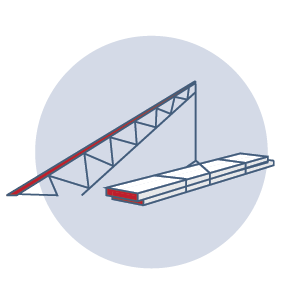 Design and Construct
Design and Construct
Although there is some variability in the details of well construction because of varying geologic, environmental, and operational settings, the basic practices in constructing a reliable well are similar. The ultimate goal of the well design is to ensure the environmentally sound, safe production of hydrocarbons by containing them inside the well, protecting groundwater resources, isolating the productive formations from other formations, and by proper execution of hydraulic fractures and other stimulation operations.
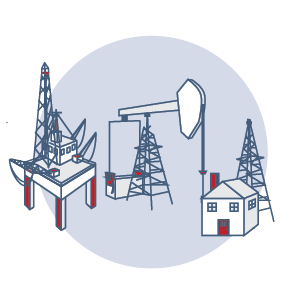 Produce
Produce
Oil and gas production includes drilling, extraction, and recovery of oil from underground, either onshore or subsea. Every oil and gas production facility is different. The size, shape and features match the climate and characteristics of the location, as well as the type of reservoir and the specific hydrocarbons within it.
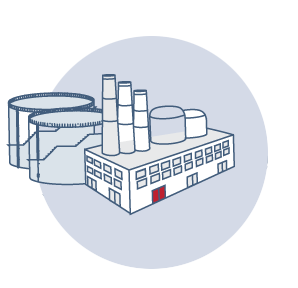 Processing Plant
Processing Plant
Processing plants clean raw natural gas by separating impurities and the various hydrocarbons and fluids from pure natural gas, producing what is known as ‘pipeline quality’ dry natural gas, also known as methane. A fully operational processing plant delivers pipeline quality dry natural gas that can be used as fuel by residential, commercial, and industrial consumers.
 Pipeline
Pipeline
The US natural gas pipeline network is a highly integrated transmission and distribution grid that can transport natural gas to and from nearly any location in the contiguous United States. Pipelines can be characterized as interstate or intrastate. Interstate pipelines are long-distance, high-capacity pipelines that transport natural gas throughout the nation. Intrastate pipelines link natural gas producers to local markets as well as the interstate pipeline system.
 Regasification
Regasification
Regasification is the process of transforming liquefied natural gas (LNG) into a gaseous state through vaporization, preparing it for use. This process occurs at regasification plants, where the temperature of LNG is increased, typically through seawater vaporizers, transforming it into gas.
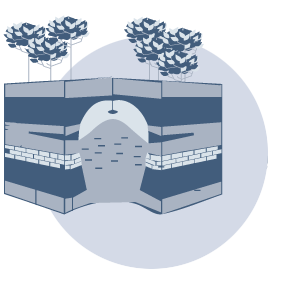 Storage
Storage
Natural gas is stored in three principal types of large underground storage systems: depleted natural gas reservoirs, aquifers, and salt caverns. More than 80% of natural gas storage capability consists of depleted reservoirs, which are relatively easy to convert to storage facilities after use and are typically located near consumption centers and existing pipeline systems. Natural gas can also be stored as liquefied natural gas (LNG), which reduces its volume to 1/600th of the volume of natural gas, making it more efficient and practical to store and transport.
 Hubs
Hubs
Natural gas hubs are locations where natural gas is priced and traded throughout the country. These ‘market hubs’ are located at the intersection of major pipeline systems. The principal hub within the United States is the Henry Hub in Louisiana.
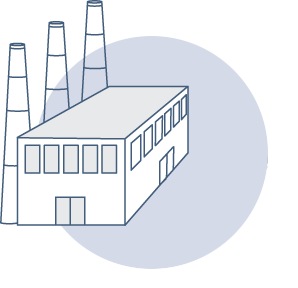 Fractionator
Fractionator
The fractionation process is the breaking down of natural gas liquids (NGLs) into their base components in order to be useful, and occurs at a fractionator facility. Common base components of NGLs include ethane, propane, t and butane. Fractionation occurs in stages, separating each base component from the stream of mixed NGLs, one-by-one.
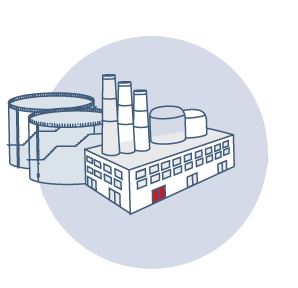 Liquefaction
Liquefaction
Liquefaction is the physical conversion of a gas into a liquid state. Liquefaction occurs at normal atmospheric pressure by super-cooling the natural gas to -260°F, creating liquefied natural gas (LNG). Prior to liquefaction, certain unwanted components, such as dust, acid gases, helium, water, and heavy hydrocarbons, are removed as they can cause difficulty downstream.
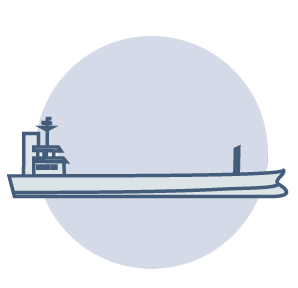 Liquefied Natural Gas Shipping
Liquefied Natural Gas Shipping
Liquefied natural gas (LNG) shipping provides a low-cost, safe, and environmentally responsible method to move large volumes of product long distances. LNG is transported in specially-built tanks on double-hulled ships. LNG carriers are among the safest in the shipping industry, having made more than 100,000 voyages without major incident.
Printable Version: Natural Gas Supply Chain

